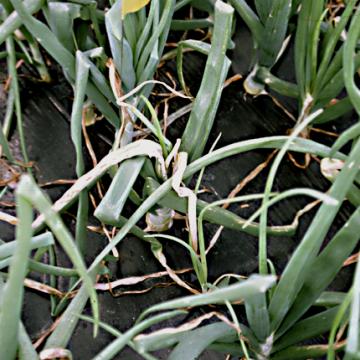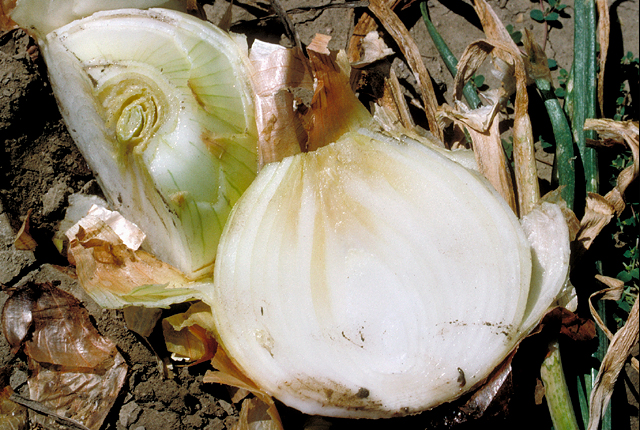DISEASE: Bacterial blight
HOST: Mulberry
Leaf with numerous small, dark brown lesions with chlorotic halos.

Bacterial blight | Mulberry
DISEASE: Bacterial blight
HOST: Mulberry (Morus alba)
PATHOGEN: Pseudomonas syringae pv. mori
SOURCE: S. Thomson
DISEASE: Bacterial blight
HOST: Mulberry
Foliage with small, dark lesions with large, yellowish halos.

Bacterial blight | Mulberry
DISEASE: Bacterial blight
HOST: Mulberry (Morus sp.)
PATHOGEN: Pseudomonas syringae pv. mori
SOURCE: M. Sato, M. Goto
DISEASE: Bacterial blight
HOST: Mulberry
Blighted foliage with yellowing and curling of leaves.

Bacterial blight | Mulberry
DISEASE: Bacterial blight
HOST: Mulberry (Morus sp.)
PATHOGEN: Pseudomonas syringae pv. mori
SOURCE: M. Sato, M. Goto
DISEASE: Bacterial leaf spot (Bacterial necrosis)
HOST: Cassava
Cassava with yellowish leaves and water-soaked, angular spots. The disease is primarily on foliage, although the pathogen may invade stem buds and young branches.

Bacterial leaf spot (Bacterial necrosis) | Cassava
DISEASE: Bacterial leaf spot (Bacterial necrosis)
HOST: Cassava (Manihot esculenta)
PATHOGEN: Xanthomonas cassavae
PATHOGEN SYNONYM: Xanthomonas campestris pv. cassavae
SOURCE: APS
DISEASE: Bacterial leaf spot (Bacterial necrosis)
HOST: Cassava
Cassava with brownish lesions and blackish edges. Leaves turn yellow with multiple infection sites.

Bacterial leaf spot (Bacterial necrosis) | Cassava
DISEASE: Bacterial leaf spot (Bacterial necrosis)
HOST: Cassava (Manihot esculenta)
PATHOGEN: Xanthomonas cassavae
PATHOGEN SYNONYM: Xanthomonas campestris pv. cassavae
SOURCE: H. Maraite, A. Alvarez
DISEASE: Center rot
HOST: Onion
Early symptoms of disease are necrotic, bleached areas on young leaves that typically wilt.

Center rot | Onion
DISEASE: Center rot
HOST: Onion (Allium cepa)
PATHOGEN: Pantoea ananatis
SOURCE: R. Gitaitis
DISEASE: Center rot
HOST: Onion
Advanced stage of center rot. The bacterium has moved down from leaves into the bulb.

Center rot | Onion
DISEASE: Center rot
HOST: Onion (Allium cepa)
PATHOGEN: Pantoea ananatis
SOURCE: H. Schwartz










